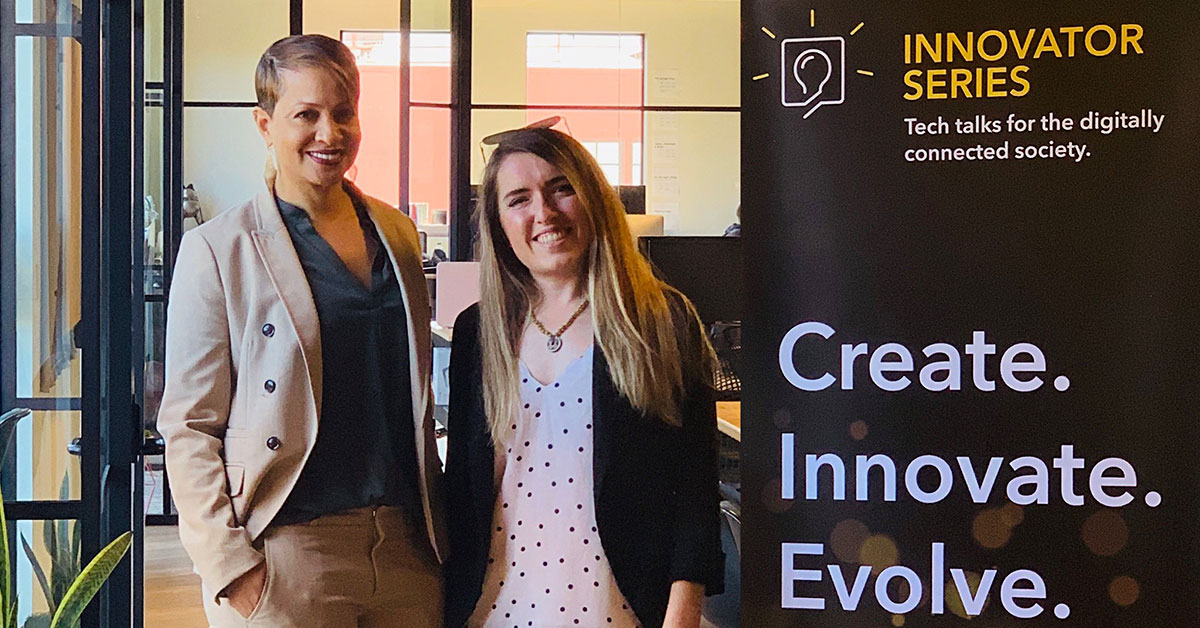As part of our Innovator Series, we were honored to host Randi Bryant and Vera Kutsenko for a discussion on corporate diversity and inclusion. Moderated by Intertrust’s community manager Ambriel Pouncy, the talk discussed corporate culture and intersectionality across the globe, starting with the tech industry and including other industries where systemic biases are of concern.
One thing that resonated throughout the panel discussion was that the sensitive nature of these issues made them very difficult to discuss amongst colleagues and in any open forum. They are clearly not readily addressable issues and have proven non-responsive to quick fixes. Deconstructing common workplace systemic cultural biases has proven very difficult for organizations. Bryant brought up the group-think factor and expounded by explaining that, much like high school, organizations need to understand that there is a clear divide between people who are “in-group” and those that are in the “out-group.” She said that in anonymous surveys she performs, the numbers of those who feel they are in the out-group can be quite large.
Kutsenko added that this was not only an issue for large corporations, but also for startups and the venture capitalists that fund them. For example, quite often hiring is done through the “friends of friends” process. This can mean that biases are ingrained into the startup from its inception. She also mentioned that the most productive way to improve these biases is through socialization normalization which needs to start at an early stage to prevent them from taking root.
The people who feel they are in the out-group can exhibit what is called “imposter syndrome.” People adapt to their perceived environment and instead of voicing their opinions, choose to conceal their true selves. This can lead to the development of an “unsafe space” in which individuals end up “cautious about what I say, where I say it and who I say it to,” (Bryant). For management, it’s simply understanding the implications of having such an environment and working diligently to shift the culture to a more positive and productive one. This can be done through individual case by case analysis, ongoing team monitoring and sincere engagement of the employees.
The first step organizations need to take towards resolving these issues is acknowledging their existence. Addressing the difficulty of taking this first step, Bryant said that in her role “I feel like an oncologist… I have to say there is cancer and how to solve it.” Once they understand there is an issue, just having some events or talks, called “sprinkling fairy dust” by Bryant, is not the solution. Kutsenko added that this is sort of like “talking the talk but not walking the walk.” When companies work on coming up with solutions to these issues, they need to consider a “long term plan” (Bryant) to ensure inclusivity is ingrained into employees’ thought processes and incorporated into the mission of the company.
Another aspect of resolving conflicts is there should be an acknowledgment that there was a miscommunication or a conflict and both parties should be willing to talk about it in a civilized manner. This ensures awareness on both sides and encourages the person who was offended to be more willing to explain their stance. The overarching idea is for organizations to develop a corporate infrastructure based upon cultivating a sense of belonging for all people regardless of differences to thrive.
About Phil Keys
Phil Keys is a Director, Comms & Research for Intertrust Technologies. He is a veteran technology industry observer, marketer, connector, and writer based in Silicon Valley. In addition to 13 years of experience as a Silicon Valley Correspondent for Nikkei Business Publications, Phil has worked for technology companies in both the US and Japan. Phil has spoken publicly in events in Tokyo and Silicon Valley as well as moderated panels in Silicon Valley. He holds a B.A. from the University of California at Berkeley and attended International Christian University in Tokyo.

